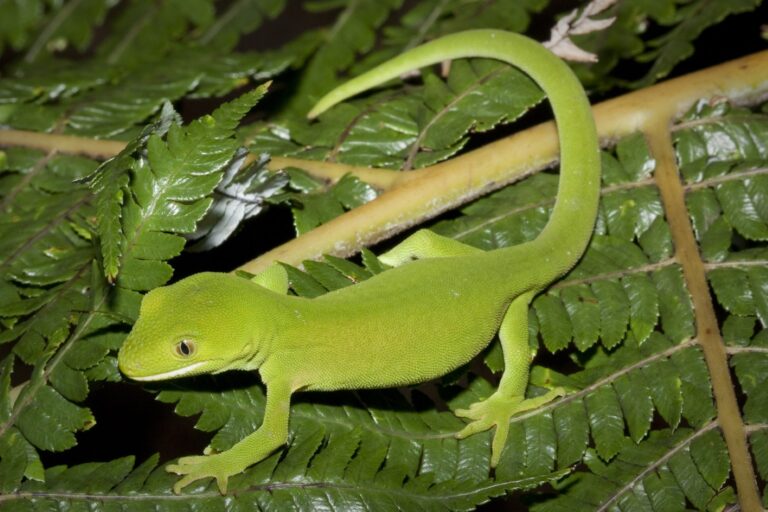
Senior Lecturer in Molecular Ecology
Unitec
In this guest blogpost, Dr Sarah Wells shares some more insight on the fascinating survey work underway to track down and unravel the whakapapa of the green geckos found across the Bay of Islands – vital work which may aid their long-term survival, and inform the proposed reintroduction of the Northland green gecko to the pest-free islands of Ipipiri.
Ipipiri is a special place for moko kākāriki (green geckos). This is because there are two species of these geckos that meet in their distributions in the region. Ipipiri forms the southern-most range of Naultinus grayii, or the Northland green gecko, while it is also the location of the northern-most boundary of Naultinus elegans, the Auckland green gecko or elegant gecko. However, beyond that, we know very little about where exactly these two species meet in the region, and what happens where they do.
Both geckos look similar, but Naultinus grayii is much larger and more robust than the aptly named Naultinus elegans. They also noted to have different tongue colours, with Naultinus grayii typically having an orange tongue and Naultinus elegans having a blue-black tongue (but see below!). Both species can be found hanging out in the bushy leaf tips of tea tree (mānuka and kanuka) scrub where they lie in wait for insects to land nearby. Generally, they do not move far. They are diurnal (active during the day), however, given their green colouration, they can be tricky to spot during the day.

One of the things we are particularly interested in finding out is whether the ranges of these two species overlap in Ipipiri, and if so, where. We are also keen to find out whether these two species interbreed. If they do, it could mean that hybrids are present in the region. This knowledge is important for conservation of each species, as hybrid individuals can suffer from lower survival and reproduction rates. As both species are classified as “At Risk – Declining” due to predation pressure and habitat clearance, maintaining reproductively healthy, genetically diverse populations of both species is critical for their survival.
Ensuring secure populations of these iconic geckos on offshore islands is an important goal for conservation. We have been working closely with Project Island Song on this project because our research has benefit for Project Island Song’s goal of reestablishing populations of Naultinus grayii on the motu of Ipipiri. By determining the geographic boundary of each species and studying their genomes to identify any hybrids, we will be able to work out where populations of “pure” Naultinus grayii exist so that these populations could become a source of individuals for future translocations to the motu.

So what exactly are we doing? We have been spotlighting for geckos at night around Ipipiri in areas of low tea tree scrub. This involves shining a torch up into the trees to try and spot their white underbellies. Once we find one, we measure them, take photos, note their tongue colour, and take a small tail tip sample (smaller than a grain of rice) for DNA analysis (geckos can naturally drop their tails and regenerate new ones as an anti-predator defence mechanism). They are then placed back in their tree. The whole process takes less than 10 minutes.
We have so far found that Naultinus grayii tend to be quite common across the Ipipiri region, probably thanks to the large intact swathes of naturally regenerating tea tree forest throughout the region. However, it is interesting that many Naultinus grayii in Ipipiri have blue-black tongues instead of the classic orange tongues. It is unknown whether this represents natural variation among the species, or whether it indicates possible hybridisation. DNA analysis, which is akin to studying their whakapapa, will be able to tell us the full story.
If you have seen a green gecko or would like your property to be included as part of this research, please get in touch at svanwinkel@unitec.ac.nz.